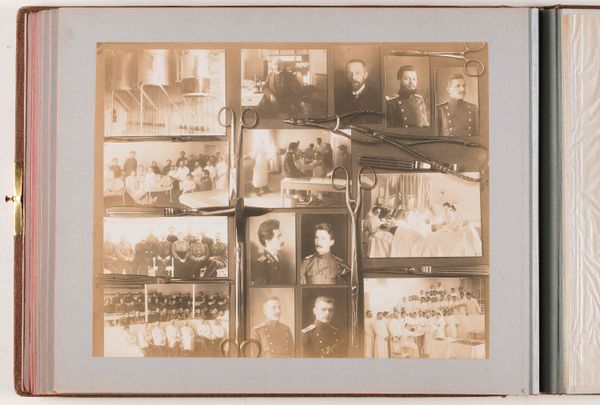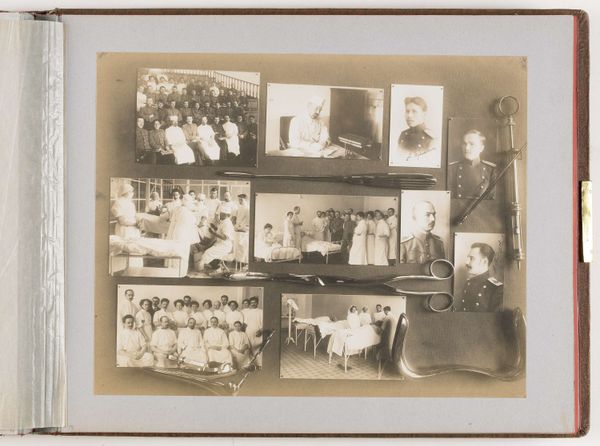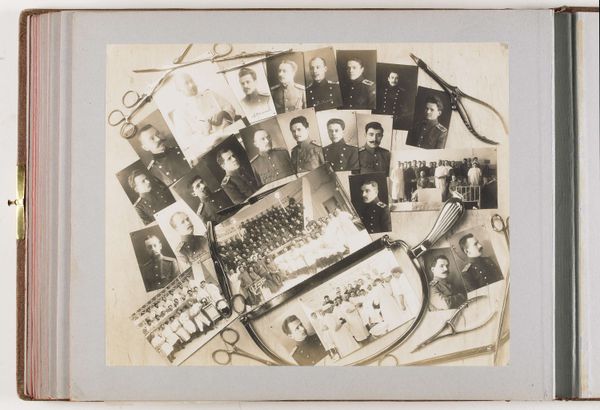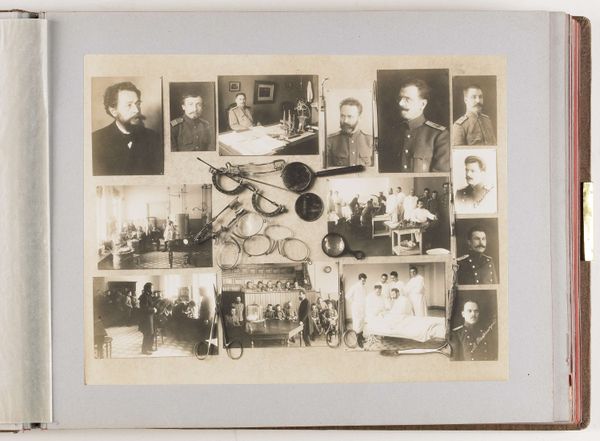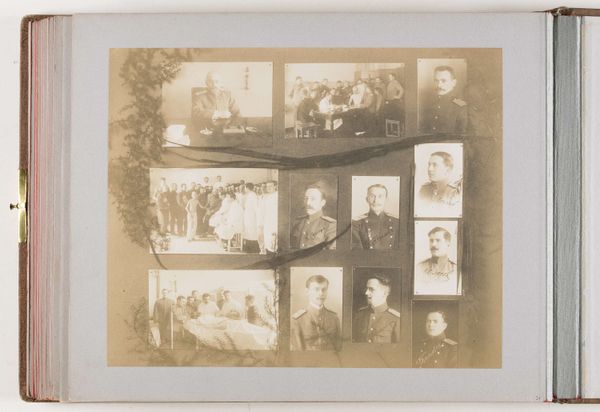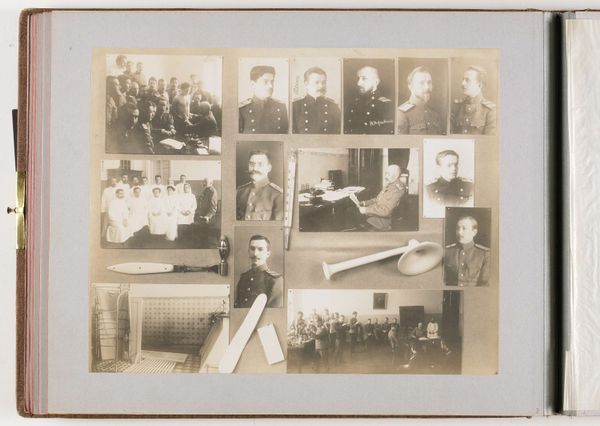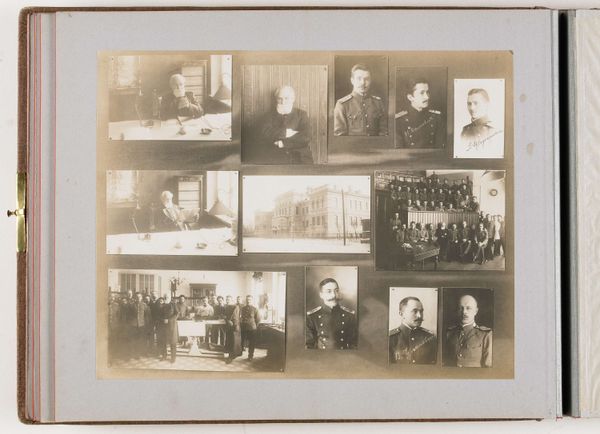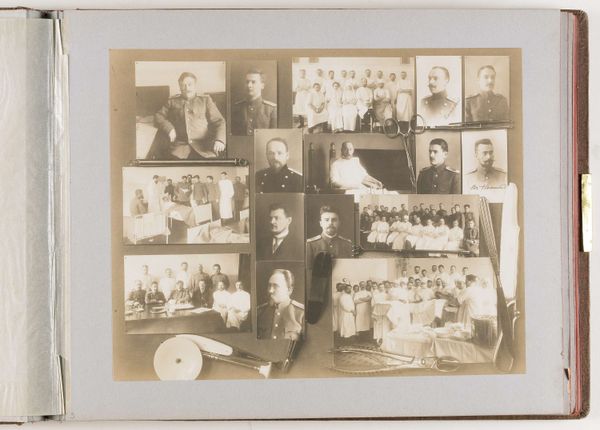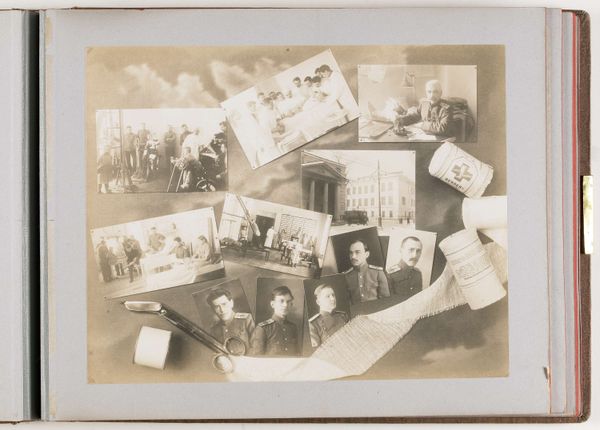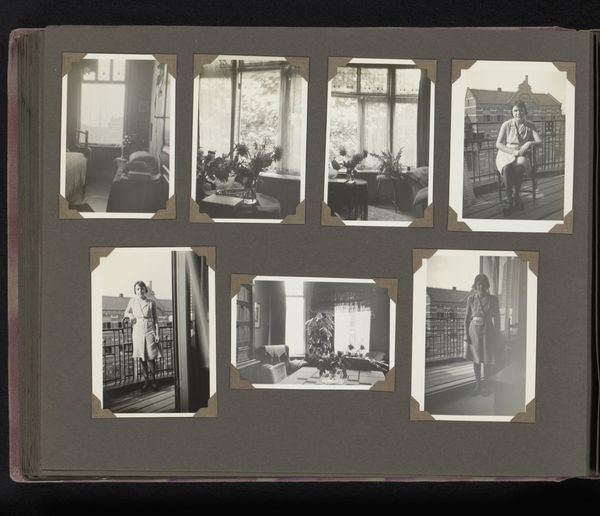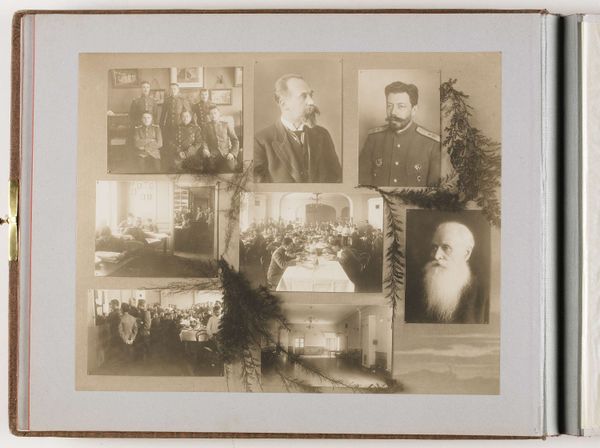
Compositie van negentien foto's van personen en onderwijs aan de Keizerlijke Militair-Medische Academie, gecombineerd met decoratie van medische instrumenten 1913
0:00
0:00
print, photography, albumen-print
#
portrait
# print
#
photography
#
group-portraits
#
history-painting
#
academic-art
#
albumen-print
Dimensions: height 236 mm, width 290 mm
Copyright: Rijks Museum: Open Domain
Editor: So, this is V. Sabel'skij's "Composition of Nineteen Photographs of People and Education at the Imperial Military Medical Academy," created around 1913. It's a really interesting collage, kind of like a visual archive of a specific time and place. It feels quite formal and official, but also a little bit…fragmented? What do you see in this piece, and how do you interpret its overall message? Curator: That's a keen observation. I see a powerful statement about institutional identity and the construction of medical knowledge within the context of early 20th-century Russia. The formal portraits interspersed with images of medical settings suggest a hierarchical structure. What roles do you think military and medical power structures had on Russian society at the time? Editor: Well, I'd imagine those power structures were very influential. You see a lot of formal portraits but I think the visual arrangement almost deconstructs that sense of power somehow by breaking everything up into these fragments and contrasting the portraiture with depictions of medical equipment. It's a little like early examples of what artists would explore in modernist photobooks and journals. Curator: Exactly. Notice the deliberate combination of individual portraits, group scenes, and medical instruments. This visual juxtaposition forces us to consider the individual within the collective, and the relationship between people, technology, and power. The academy essentially manufactures physicians to deploy across their empire. The photographs' albumen print further contextualizes it; what about this materiality intrigues you? Editor: Albumen prints have a kind of…sepia-toned nostalgia. They feel very "of their time," like a glimpse into the past, but also somewhat distanced and staged. The warmth in the photo contrasts with some of the darker implications about military influence. Curator: Precisely. This dissonance encourages critical reflection on how institutions create narratives and reinforce power dynamics through visual culture, even in something as seemingly straightforward as a composite photograph. I believe these photos are great examples of understanding and unpacking this visual power play. Editor: This was really eye-opening! I hadn't considered how the combination of photographs and the very material of the print itself could be such a powerful comment on institutional power and social context. Thank you!
Comments
No comments
Be the first to comment and join the conversation on the ultimate creative platform.
